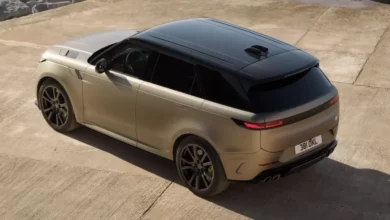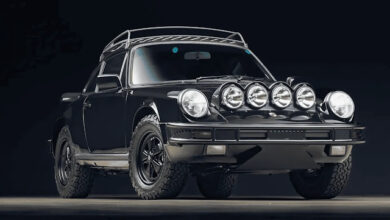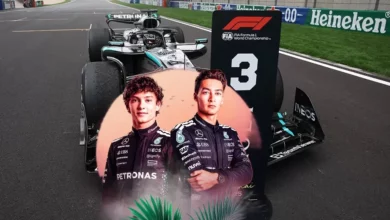Next-Gen Machines: Innovations Driving NASCAR’s Future


NASCAR has long been a sport where raw horsepower, daring strategy, and razor-thin margins decide the outcome of races. But the future of stock car racing is being reshaped by technological advancements, most notably the introduction of the Next Gen car in 2022. This new platform emphasizes innovation with features such as independent rear suspension, composite body panels, and advanced aerodynamics. Alongside performance improvements, NASCAR is looking toward sustainability, with prototypes for electric vehicles and hybrid engines paving the way for a greener future. Below, we take a deep dive into these game-changing developments.
The Arrival of the Next Gen Car in 2022
The debut of the Next Gen car in 2022 represented the most dramatic shift in NASCAR engineering in decades. Built to deliver tighter competition and reduce the gap between teams with larger and smaller budgets, the car standardized many components across the grid while introducing innovativeperformance features. The adoption of symmetrical designs also emphasized aerodynamics and improved handling across all tracks. Teams now work with a uniform platform, creating a more balanced field and forcing drivers to rely on skill as much as machine.
Independent Rear Suspension
For the first time in NASCAR Cup Series history, the cars are equipped with an independent rear suspension system. This major change eliminated the traditional solid rear axle, which had been a defining feature of stock cars for decades. The independent rear suspension increases cornering ability, allows smoother transitions, and ensures the cars can handle tighter turns on road courses. The innovation not only improves driver control but also brings NASCAR vehicles closer to modern high-performance sports cars, elevating the entire racing experience.
Composite Body Panels
The Next Gen car introduced composite body panels, replacing the heavy steel that had been used for years. These panels are lighter, more flexible, and better equipped to withstand the rigors of bumping and scraping on the racetrack. Instead of forcing cars out of contention due to minor damage, composite materials allow vehicles to remain competitive after contact. This change enhances both durability and safety, while also reducing costs for teams since bodywork is easier to repair and maintain.
Aerodynamics and Downforce Improvements
Aerodynamics play a crucial role in stock car racing, and the Next Gen model was designed with this in mind. With a new underwing and rear diffuser, airflow is directed more efficiently to create greater downforce without generating excessive drag. The balance between speed on straightaways and grip in corners has been fine-tuned to produce more exciting, wheel-to-wheel racing. Drivers now experience less turbulence when trailing another car, which encourages overtaking and intensifies on-track battles.
As NASCAR embraces technological innovation, fans in the Midwestern region can stay updated and place informed wagers through betting apps in Missouri once they go live. These platforms will provide real-time race data, odds, and analysis, allowing fans to interact with the sport in ways that mirror the technology-driven changes happening on the track. Just as the Next Gen car brought engineering precision to NASCAR, betting applications are set to bring analytical precision to fans, creating a deeper level of engagement and making each race even more thrilling for local audiences.
Hybrid Engine Development
One of the most significant steps toward the future involves hybrid engine technology. NASCAR is testing systems that blend traditional combustion engines with electric assistance, aiming to cut emissions without compromising performance. Hybrid systems provide instant torque, better fuel efficiency, and lower overall carbon footprints. This innovation mirrors trends in global motorsports while maintaining NASCAR’s unique style of competition. Drivers and teams must now adapt strategies around managing hybrid systems, representing a new era of tactical racing.
Electric Prototype Testing
Beyond hybrids, NASCAR has also begun experimenting with fully electric prototypes. These vehicles display the sport’s willingness to adapt to environmental priorities while still maintaining the thrill of high-speed racing. Although not yet part of the official Cup Series, these prototypes demonstrate that NASCAR is laying the groundwork for a zero-emission future. By exploring battery technology, charging infrastructure, and sound design, NASCAR ensures electric stock cars retain the visceral excitement that fans expect.
Cost Reduction and Accessibility
One of the driving philosophies behind the Next Gen car was cost control. Standardized parts, such as gearboxes, chassis, and suspensions, reduce expenses for smaller teams while making competition more even. This change promotes parity in the sportand gives underdog teams a fighting chance against powerhouse organizations. The ability to compete at a higher level encourages diversity in ownership and attracts new entrants, strengthening the overall NASCAR ecosystem.
Safety Enhancements for Drivers
Safety remains paramount in NASCAR, and the Next Gen car includes several critical upgrades. Improved headrest supports, energy-absorbing foam, and redesigned impact zones enhance driver protection during collisions. The forward-moving driver position reduces risk in high-speed crashes, while advanced seatbelt systems provide greater security. These innovations prove that performance and safety can evolve hand-in-hand, safeguarding athletes while preserving the sport’s exhilarating nature.
Fan Experience Through Technology
NASCAR’s modernization extends beyond the track. Enhanced broadcast graphics, live telemetry, and augmented reality experiences give fans deeper insights into races. Technology ensures that audiences not only watch but also interact with the sport, bridging the gap between driver performance and viewer understanding. The availability of data-driven storytelling elevates the fan experience, aligning with the innovation introduced in the Next Gen machines.
Sustainability and NASCAR’s Long-Term Vision
Sustainability has become a cornerstone of NASCAR’s long-term strategy. From hybrid engines to electric prototypes, the series is committed to reducing its environmental footprint while maintaining its reputation for high-octane competition. Partnerships with energy providers, investments in renewable fuel, and initiatives to reduce waste at events underscore this mission. NASCAR’s vision is clear: embrace innovation, prioritize the planet, and ensure the sport thrives for decades to come.
Innovation as the Driving Force
The introduction of the Next Gen car in 2022 marked the beginning of a transformative chapter in NASCAR history. With independent rear suspension, composite body panels, aerodynamic refinements, and forward-looking hybrid and electric projects, the sport has redefined its identity. As NASCAR pushes boundaries in sustainability, technology, and fan engagement, the road ahead is set to be as thrilling as the races themselves. Innovation is no longer a supporting element—it is the main engine driving NASCAR’s future.
Please follow and like us:



